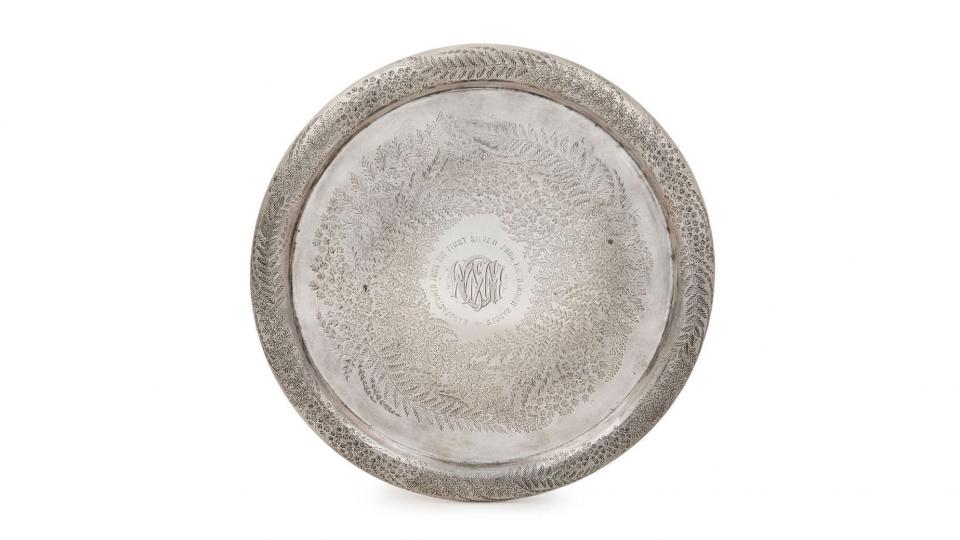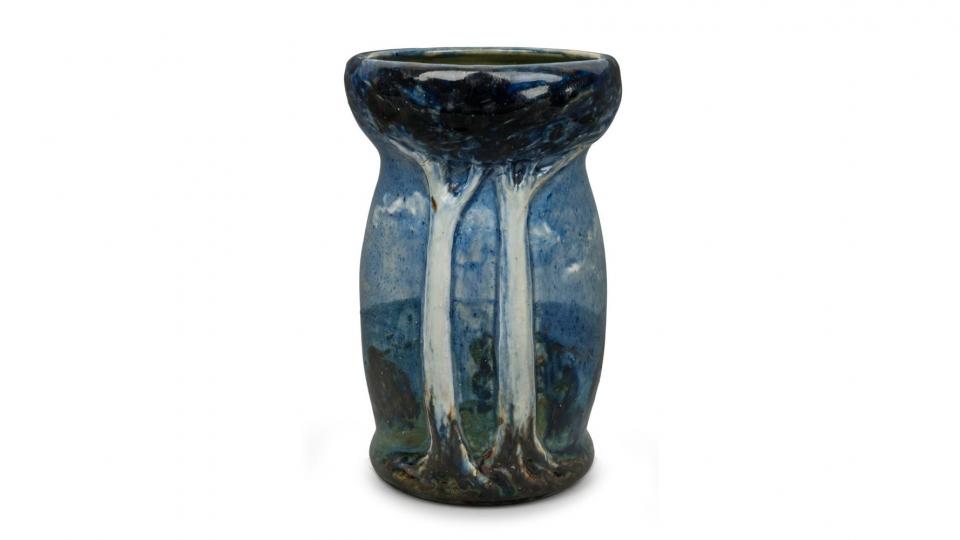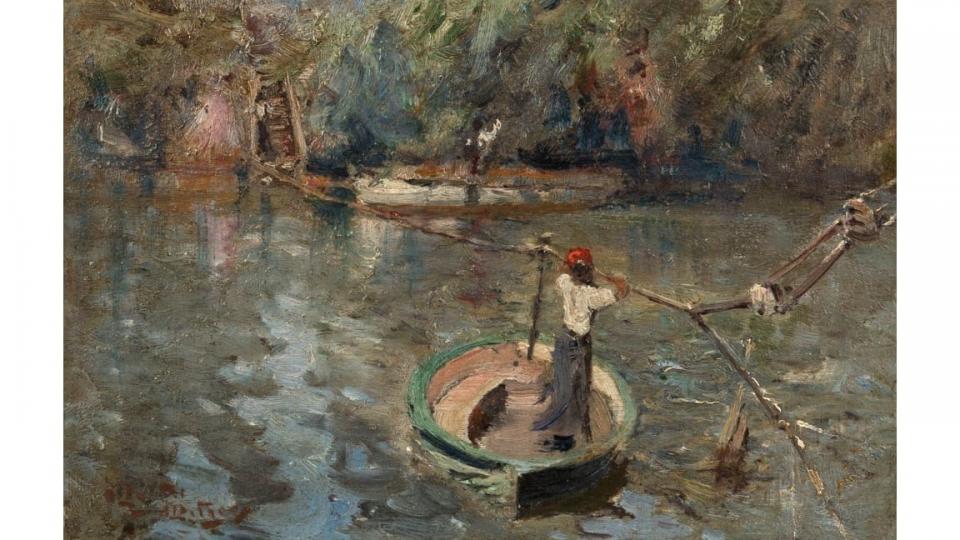Submitted by aarAdmin on Wed, 11/22/2023 - 00:00
A 19th century antique Narwhal tusk more than two metres long (lot 759) almost doubled its catalogue estimate to go under the hammer for $39,000 at Melbourne-based Leski Auctions Australian & Historical sale on November 18 and 19.
The Narwhal is a medium-sized toothed whale, characterised by a large tusk from a protruding canine tooth, that lives year-round in the Arctic waters off Greenland, Canada and Russia.
Although females also can grow tusks, it is mainly a feature of males and they can grow to more than three metres. Biological functions are unclear, but scientists speculate they could be used as a weapon, for opening breathing holes in the ice, in feeding, as an acoustic organ and as a secondary sex character.
Mounted specimens are rarely seen at auction – hence the keen bidding among collectors at Leski’s latest auction.
Over 86 per cent of the 1498 lots on offer at the two-day sale were sold with an antique Australian serving tray manufactured from the first silver mined at Broken Hill in the Barrier Ranges far western New South Wales (lot 498) another auction showpiece with its $14,000 result – more than double the $4000-$6000 catalogue estimate.
Another well above catalogue estimate result was the circa 1870 John William Carey Queensland specimen wood writing box (lot 300) that sold for $13,000, while Australian colonial artist Walter Withers (1845-1915) jumped into the top 10 with his painting Twickenham (lot 1222) for the same figure.
Another well-known artist Leonard William French (1928-2017) was not far behind on $12,000 for his The Soul Cages No. 2 (lot 1324).
A joint Merric and Doris Boyd 1930 pottery vase effort (lot 29) also sold for $13,000 – more than four times its upper catalogue estimate, while a rare green Remued vase with koala and branch decorations (lot 93) was knocked down for $11,000.
Rounding out the top 10 lots is an impressive 1915 Ernest Finlay vase adorned with an Australian landscape scene (lot 28) for $9000 and a painting by C.A. Abbott, active during the 1860s, entitled Diggers’ Camp (lot 119) for $8500 – almost three times its estimate.










